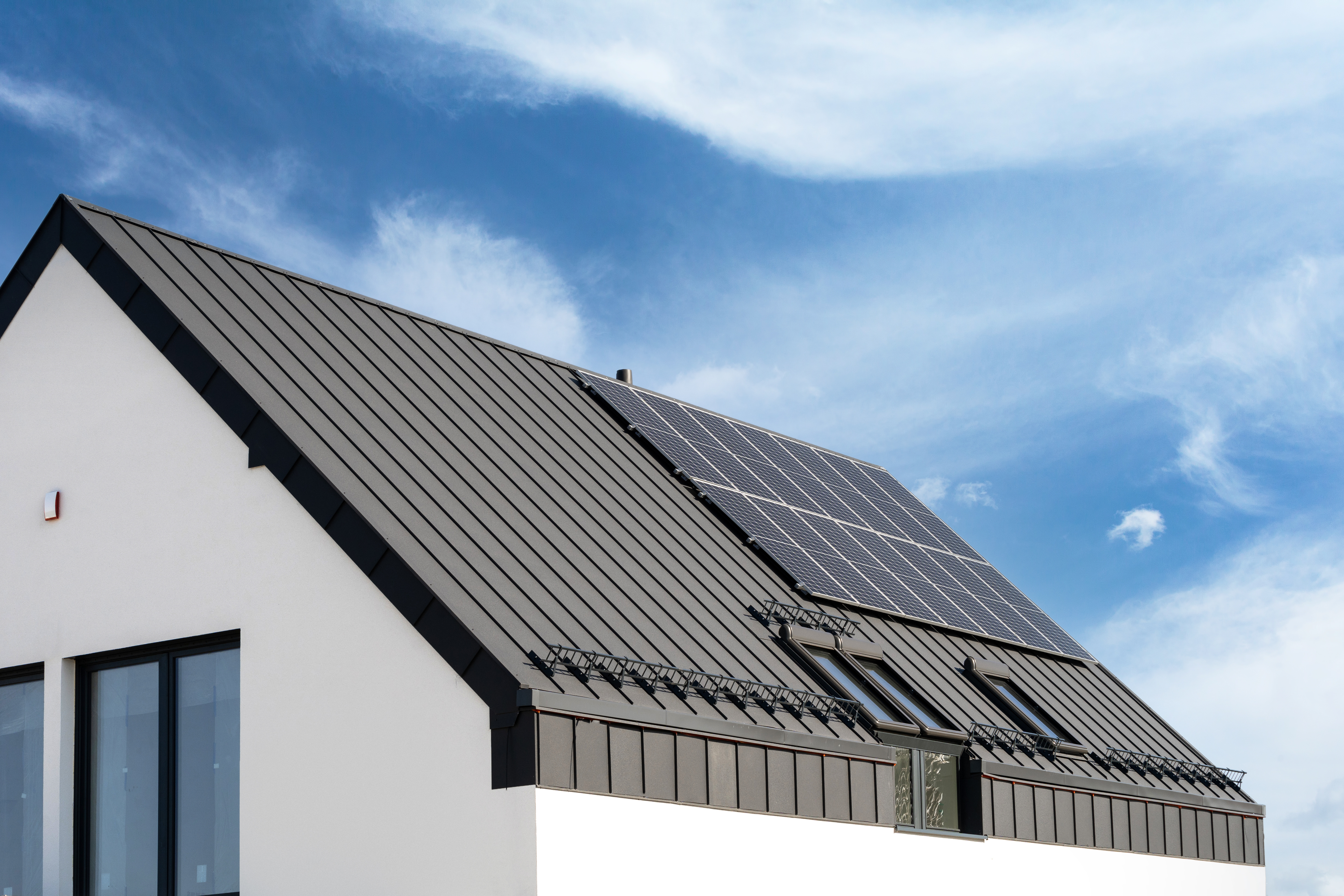
A metal roof can defend your home against Ohio’s varying weather conditions. Learn how much a metal roof costs in Columbus, OH.
Maximizing your outdoor space


Green roofs can improve a home's insulation and extend the roof's life span.
The roofs feature a high price tag, costing $10 to $50 per square foot.
Green roofs can improve stormwater management but have a potential risk of leaks.
Green roofs are becoming increasingly popular, especially for urban homes, to improve aesthetics, usability, and environmental factors. But is this roof type right for your home? Learn about green roof pros and cons to help you decide.
Green roofs are rooftops covered with vegetation, soil, and a waterproof membrane, providing an eco-friendly alternative to traditional roofing. They consist of several layers, including a root barrier, drainage layer, and growing medium, allowing various plants, grasses, or even small shrubs to grow. Green roofs improve air quality and provide aesthetic and recreational spaces in cities, making them an attractive solution for sustainable urban development.
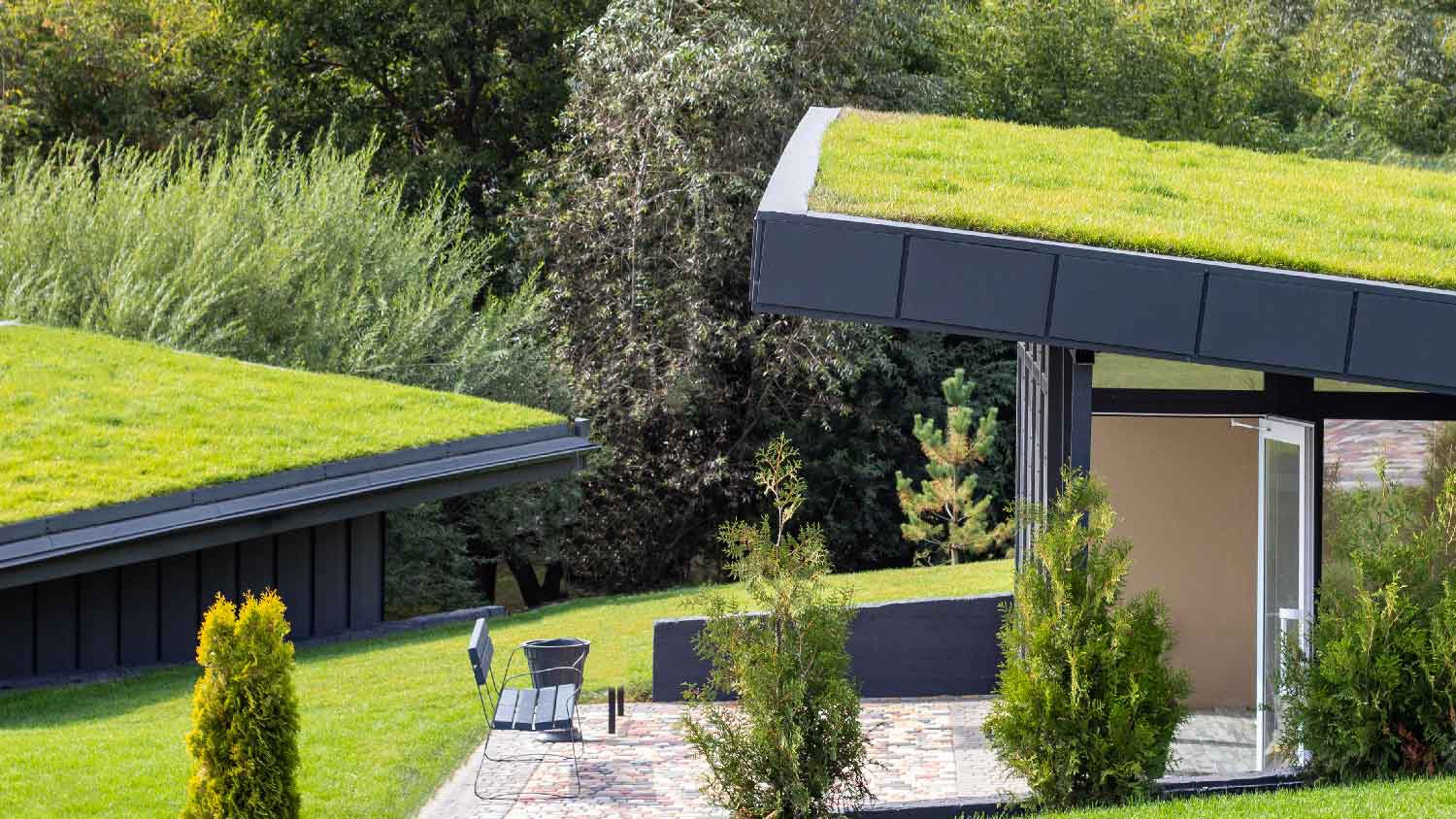
Green roofs offer a range of environmental, economic, and social benefits that make them an attractive option for sustainable urban areas.
Green roofs provide a natural barrier that regulates indoor temperatures year-round. The layers of soil and vegetation absorb heat from the sun, reducing the heat penetrating the building in the summer and retaining warmth in the winter. This results in lower energy consumption for heating and cooling, reducing utility costs and increasing energy efficiency.
There are several benefits of an energy-efficient roof. Green roofs help reduce various types of pollution by filtering airborne pollutants and capturing dust particles through their vegetation, improving air quality. They also mitigate noise pollution by absorbing sound waves to provide a quieter environment inside and outside. Green roofs reduce water pollution by absorbing rainwater, which decreases runoff and filters out pollutants before they enter stormwater systems.
Green roofs capture and absorb rainwater through soil and vegetation layers, reducing the volume and speed of water runoff. This process helps to alleviate pressure on urban drainage systems, lowering the risk of flooding during heavy rainfall. The plants and substrate act as natural filters, trapping pollutants and sediments, which improves water quality that eventually flows into rivers and waterways.
Green roofs protect the underlying roofing materials from harsh environmental elements such as UV radiation, temperature fluctuations, and physical damage from hail or debris. This type of roof features a life span of 20 to 40 years. The vegetation and soil layers shield the waterproof membrane from direct exposure to the sun, reducing thermal stress and preventing cracks or deterioration.
Green roofs increase property value by enhancing the building's aesthetic appeal with lush, green landscapes. They also provide additional recreational spaces, offering residents and tenants outdoor areas for relaxation or social activities. The energy efficiency and sustainability benefits can make properties more desirable to environmentally conscious buyers, potentially leading to higher market value and rental income.
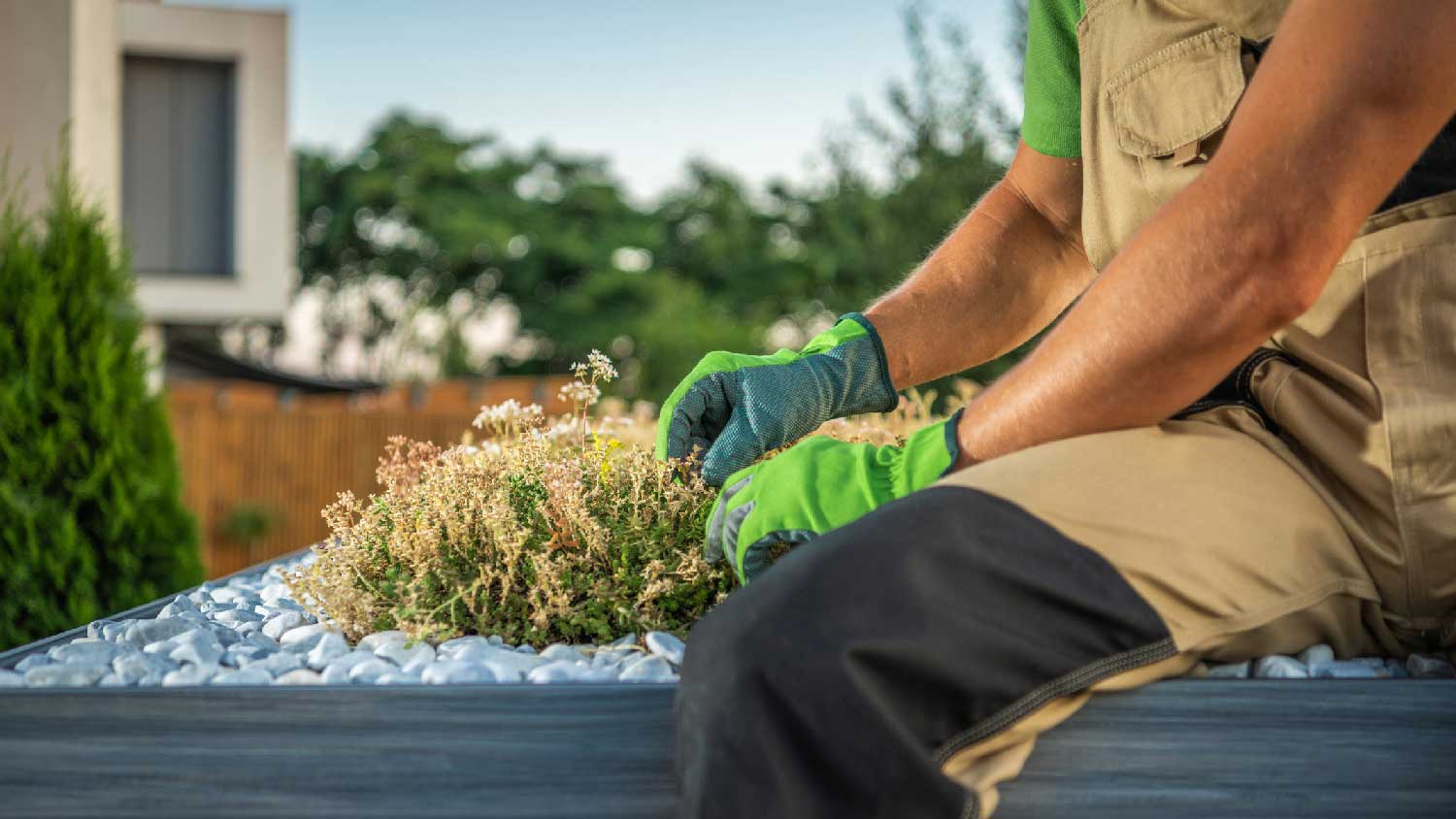
While green roofs provide numerous benefits, some challenges and drawbacks must be carefully considered.
Green roofs have a higher upfront cost compared to traditional roofing due to the specialized materials, labor, and structural modifications required to support the additional weight of soil and plants. The need for a waterproof membrane, drainage layers, and high-quality growing medium further adds to the installation expenses. On average, green roof installation costs $10 to $50 per square foot. If proper installation isn't followed, you may need to budget for roof replacement costs.
Some insurance providers may charge higher premiums for buildings with green roofs, perceiving them as a greater risk for water damage or structural failure. These combined costs can make green roofs a significant initial investment, though they may offer long-term savings through energy efficiency and extended roof life span.
Green roofs require regular maintenance for weeding, watering, fertilizing, and inspecting the vegetation and drainage systems to ensure longevity and functionality. Maintenance frequency depends on the type of green roof, the plants used, and the local climate conditions. Proper upkeep is crucial to prevent issues like plant die-off, drainage blockages, or membrane damage that could cause leaks.
Green roofs have several limitations, including their suitability for different buildings, as not all structures can support the additional weight without significant reinforcement. The roof may require extra irrigation in hot, dry climates or special insulation in cold regions. Local building codes and regulations may restrict green roof installation, requiring special permits or compliance with specific standards, which can complicate the planning process.
Green roofs add significant weight due to the layers of soil, vegetation, and water they retain. This additional load requires thorough structural assessments to ensure the building can safely support it, which may involve reinforcing the roof or making other modifications.
Green roofs risk leaks if the waterproof membrane beneath the soil and vegetation is damaged or improperly installed. This allows water to seep into the building and cause structural damage. Regular inspections and maintenance are necessary to detect and repair any signs of membrane failure or drainage issues. Additionally, green roofs can attract pests such as insects, rodents, and birds, which may require additional pest control measures to prevent infestations.
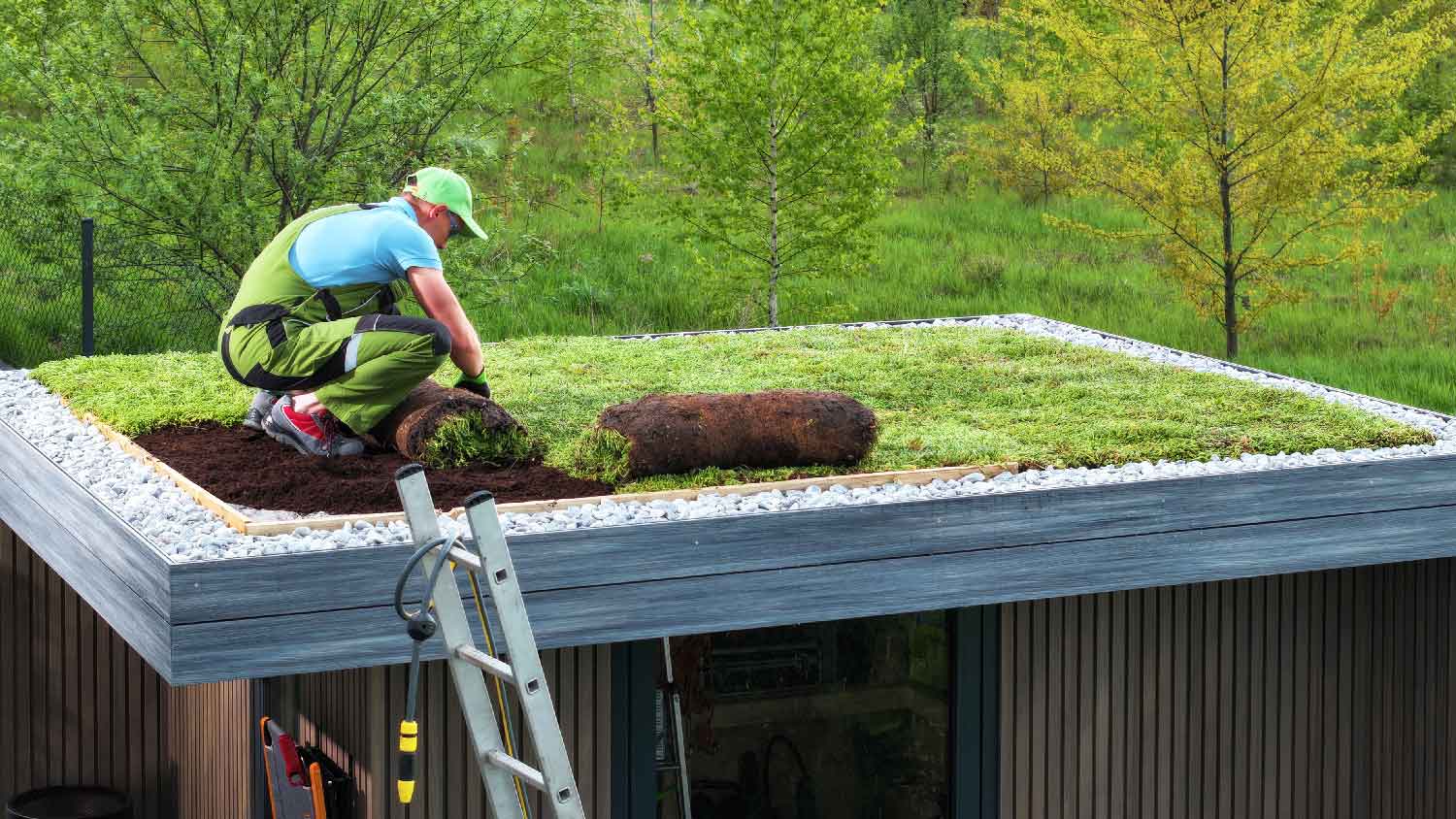
If you’re wondering whether a green roof would work for your property, you should consider the installation cost, insurance premiums, and ongoing maintenance expenses. Evaluating your home's structural integrity is also crucial. You should get an inspection to determine if the roof can support the additional weight. The local climate is also important, as regions with extreme weather may require additional irrigation or insulation.
If you value environmental sustainability and are willing to commit to the necessary upkeep, a green roof may be an excellent choice. However, if the costs, maintenance, or structural adjustments are limiting, other sustainable options, such as a cool roof, may be better.
If you're considering a green roof, hire a local roofing professional. Discuss your thoughts about installing a green roof and the feasibility of one for your home.
From average costs to expert advice, get all the answers you need to get your job done.

A metal roof can defend your home against Ohio’s varying weather conditions. Learn how much a metal roof costs in Columbus, OH.
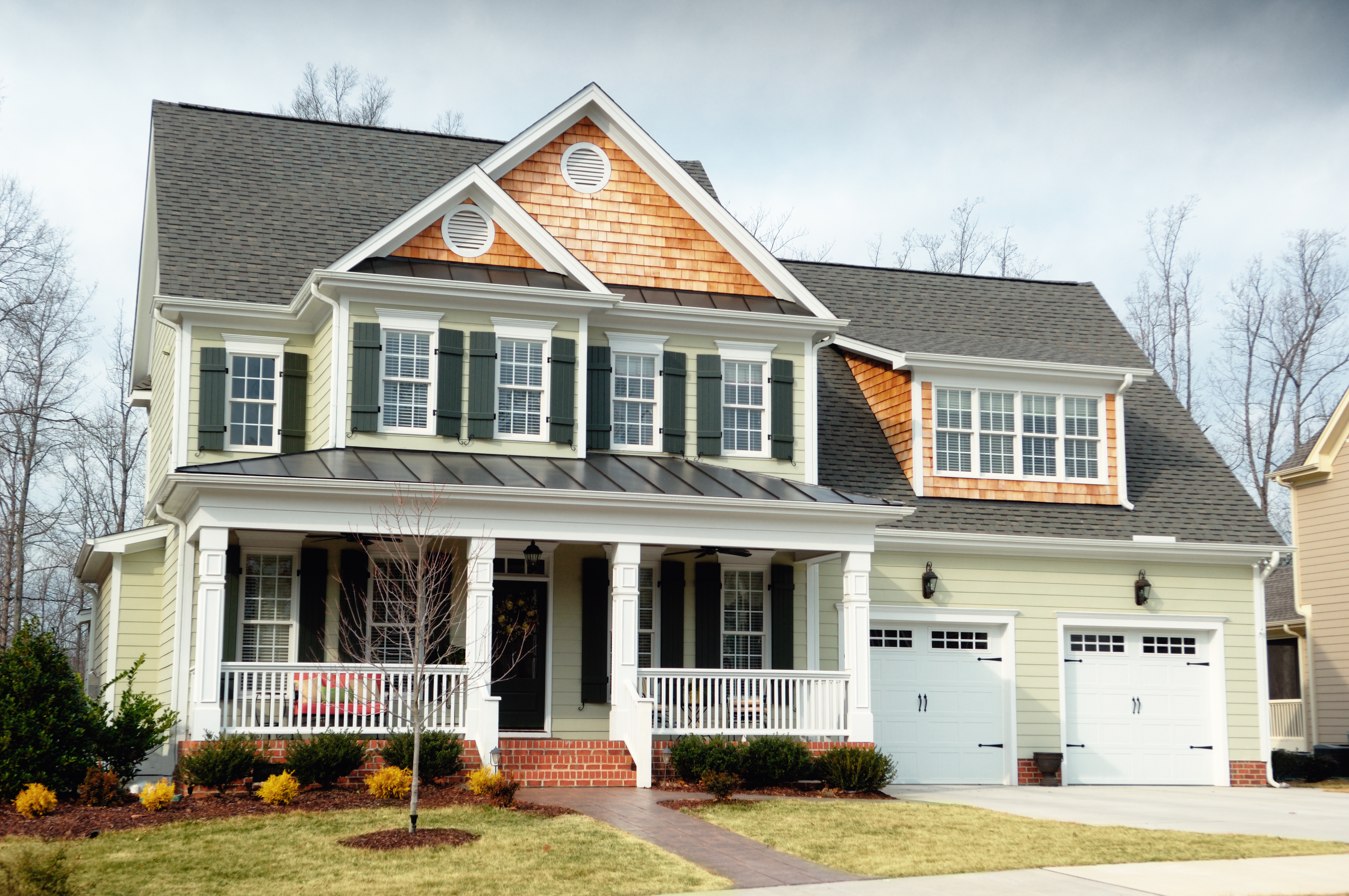
Dealing with a visibly damaged roof or leak? Learn about roof repair costs in Columbus to see how much you’ll need to budget for a permanent solution.

Learn about roof replacement costs in Columbus and what factors are at play to budget accurately and make sure you’re getting a fair price.

Dealing with insurance claims probably isn’t your favorite part of owning a home, but we’re here to guide you throughout the roof damage insurance claim process.

When you install a new roof, you want it to last as long as possible. Knowing what voids a roof warranty helps you avoid situations that nullify the warranty.

Shingles won't cut if you have a flat roof or a roof with minimal pitch. You may want to consider torch down roofing. Here’s what you should know.